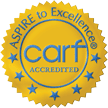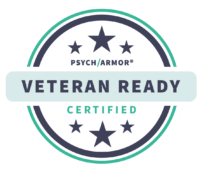Opioid Detox is the Beginning of Recovery

Opioids are prescribed to relieve pain. Unfortunately, they have addictive powers capable of causing more pain than relief. A recent study found that twelve million people are currently abusing pain medication. Opioids are the leading cause of fatal overdoses. Someone with substance abuse disorder is content while under the influence, but when withdrawal symptoms begin to set in eight hours later, everything changes. Loved ones experiencing opioid detox may become unrecognizable. Lying, avoidance, cheating, and stealing are all common early indicators of addiction. Social, financial, professional, and legal symptoms are often quick to follow. Anything to avoid the unpleasant experience of opioid detox.
Symptoms
Roughly, eight hours after the last use, symptoms similar to the flu begin to arise. Restlessness, irritability, insomnia, sweating, and anxiety are all initial opioid withdrawal symptoms. Next, more intense reactions such as high blood pressure, rapid heartbeat, diarrhea, and paranoia crop up. Long-term side effects of opioid detox include weakened immune system, paralysis, brain damage, and seizures. Risk or relapse is highest during the opioid detox period as the uncomfortability will push someone to use again. The intense consequences of opioid detox will begin to subside as the body readjusts to life without opioids. Mental and physical ramifications of addiction may last up to a year after treatment.
Opioid Detox Treatment Options
Opioid detox is only the beginning of recovery. Recovery is a lifetime of success. It is highly recommended to undergo opioid detox at an accredited addiction treatment facility. At Seabrook, we have a detox only program specialized in opioid detox. Our opioid detox program typically lasts five to seven days, depending on the severity of withdrawal a patient is enduring. Following opioid detox, it is recommended a patient enters inpatient treatment. Opioid detox inpatient treatment typically lasts twenty-eight days covering topics such as addiction education, stress management, alternative coping skills, building healthy relationships. Therapy is the most important component of opioid detox. If the underlying issues are not addressed, someone with substance abuse disorder will go right back to using. Seabrook offers a variety of therapies including individual, group, twelve step, and family.
Methadone
In the 1980’s, rapid opioid detox was introduced this. The appeal of rapid opioid detox is high. The procedure places a patient under anesthesia, allowing them to bypass withdrawal symptoms. However, the CDC has come out against this practice. The CDC’s disapproval has not stopped for-profit agencies from promoting their rapid opioid detox services as the best form of opioid detox treatment. While rapid opioid detox is expensive and dangerous with unproven benefits, there is an effective, safer, and cheaper alternative. Medication assisted treatments like Methadone relieve the symptoms of opioid detox by mirroring the effects of opioids without providing the captivating response. Methadone allows a patient to heal mentally and physically enough they can become receptive to therapy.
After Opioid Detox
After opioid detox, patients typically transition into inpatient residential treatment at an accredited addiction treatment facility, such as Seabrook. These facilities offer the comforts of twenty-four hour supervision by trained nurses, nutritious meals, meditation, and aftercare planning. Going through opioid detox at home can be very dangerous. If you chose to do so, it is vital to have a strong support system aware of what to look for, and ready to call for help in case of an emergency. Dehydration and infection are two very common consequences of undergoing opioid detox unsupervised.
Narcan is an overdose reversal drug highly recommended for anyone living with someone diagnosed with substance abuse disorder. Do not talk down to a loved one experiencing addiction, or make them feel less than. Addiction is a chronic medical condition, and it should be treated as any other disease. Addiction does not discriminate. It can happen to anyone, no one is immune. The best way to help someone with substance abuse disorder is to encourage them. Educate yourself on the issue. While you should support your loved one, it is important to set boundaries to avoid enabling.
Seabrook Can Help
While there is no cure for addiction, recovery is possible. Dedicating yourself to your goal of sobriety, eating well, exercising, and continuing to work the steps can lead to a beautiful life without substance abuse. Use the time available during inpatient treatment to fully cleanse your mind, body, and soul. After the twenty-eight days of residential treatment, you will have to re-enter the real world where opportunity and triggers lie behind every corner. At Seabrook, our staff of highly trained therapists and counselors train patients throughout their stay on how to combat temptation and reduce cravings.
If someone you love is in need of opioid detox, do not hesitate to reach out for help. For more than 44 years, we’ve been working with families to find the courage to recover from substance abuse, including heroin detox, chemical dependency and prescription medication abuse. Call today so we can work together to help you or someone you love: (888) 223-0298.
Source
drugabuse.com/drug-withdrawal/



